|
|

|
Porsche, and the Porsche crest are registered trademarks of Dr. Ing. h.c. F. Porsche AG.
This site is not affiliated with Porsche in any way. Its only purpose is to provide an online forum for car enthusiasts. All other trademarks are property of their respective owners. |
|
|
| nihil44 |
 Feb 23 2022, 08:57 PM Feb 23 2022, 08:57 PM
Post
#1
|
|
Member   Group: Members Posts: 157 Joined: 28-January 12 From: Brisbane, Australia Member No.: 14,058 Region Association: None 
|
I have bragged to my carburettored friends about how the '74 1.8 L Jet starts off the key even after a lay off of a month or so. Lately it has required two cranks to start. I suspected a vacuum leak as I pulled a plug and the pluf looks like the mixture is lean but the exhaust tips are black
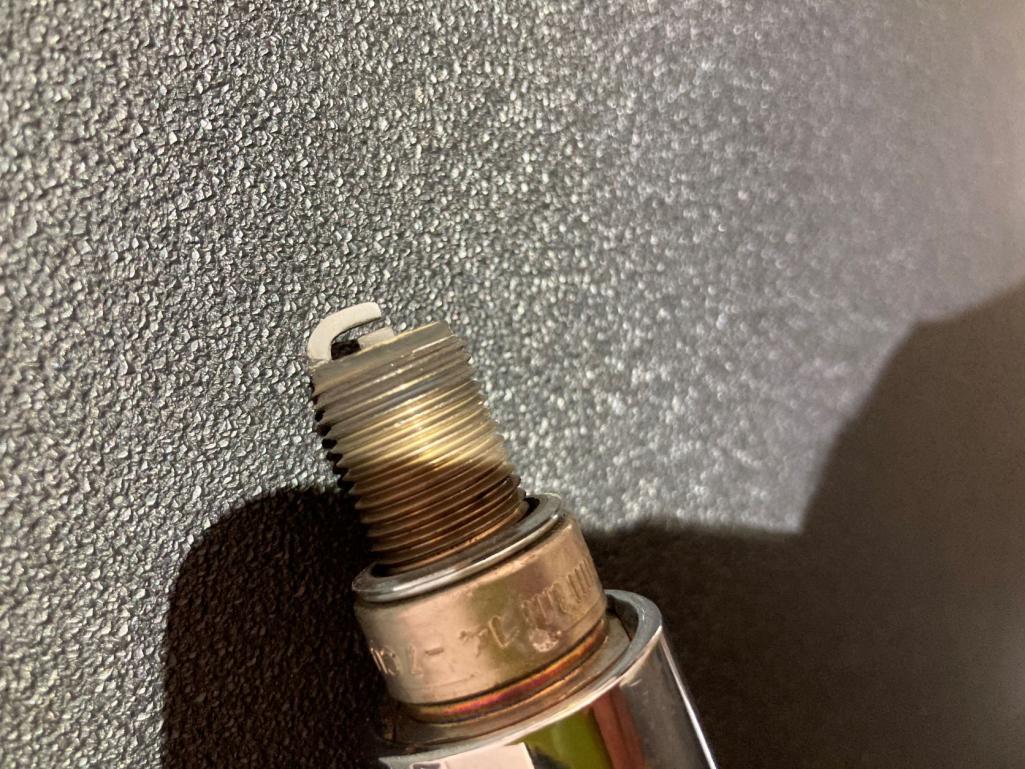 I made a smoke maker based on this YouTube site THE BEST SMOKE TESTER YOU CAN BUILD!! / THE MR. FUSION MINI BUILD - YouTube Applied smoke into the intake system and this is what resulted. 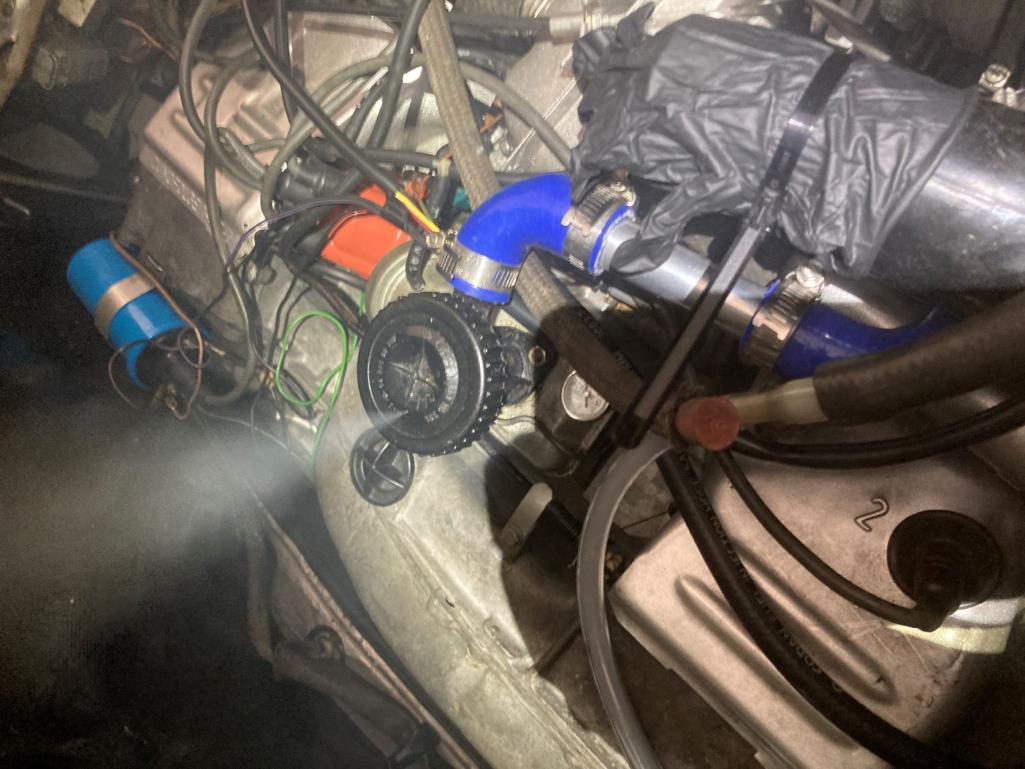 Over the years I have read about ensuring the oil filler cap has a good O ring and cap seal otherwise unmeasured air will enter the intake system downstream from the Air Flow Meter and cause a disturbance in the A/F ratio determined by the ECU. There is a factory hole in the oil filler cap as revealed by the smoke test. I have 2 filler caps and they both have the small hole. How does this work if the L Jet intake system is supposed to be closed? I was expecting the smoke test to reveal a vacuum leak in the intake boot or elsewhere and that would be the 'aha' moment. Not so lucky. However I would like to confirm that the intake system is vacuum leak free. Would appreciate some explanation from the collective brain trust. A word of caution: If doing a smoke test, perform it outside or in a well ventilated garage otherwise it will set off the smoke detectors. How would I know this? David |
  |
Replies
| wonkipop |
 Mar 1 2022, 04:51 PM Mar 1 2022, 04:51 PM
Post
#2
|
|
Advanced Member     Group: Members Posts: 4,808 Joined: 6-May 20 From: north antarctica Member No.: 24,231 Region Association: NineFourteenerVille 
|
@nihil44
looking close at photo you posted of interior of underside of filler cap and taking another look at mine this morning, i reckon the top of the cap is this. see photo. (but it doesn't have the big spring like the VW ones). 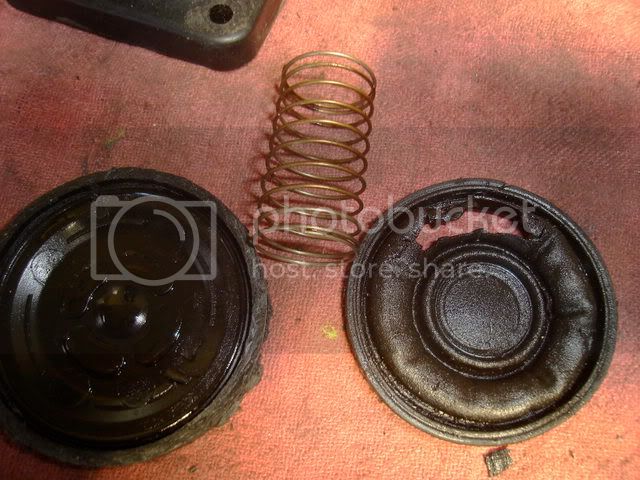 image courtesy of thesamba website. ---- i believe the centre of the screw down oil cap in the 914 engine uses this standard part. there is a membrane and i think its bonded to this plastic piece which forms the central section of the filler cap. if its not bonded its fitted in tightly. photo of standard vw central cap piece. 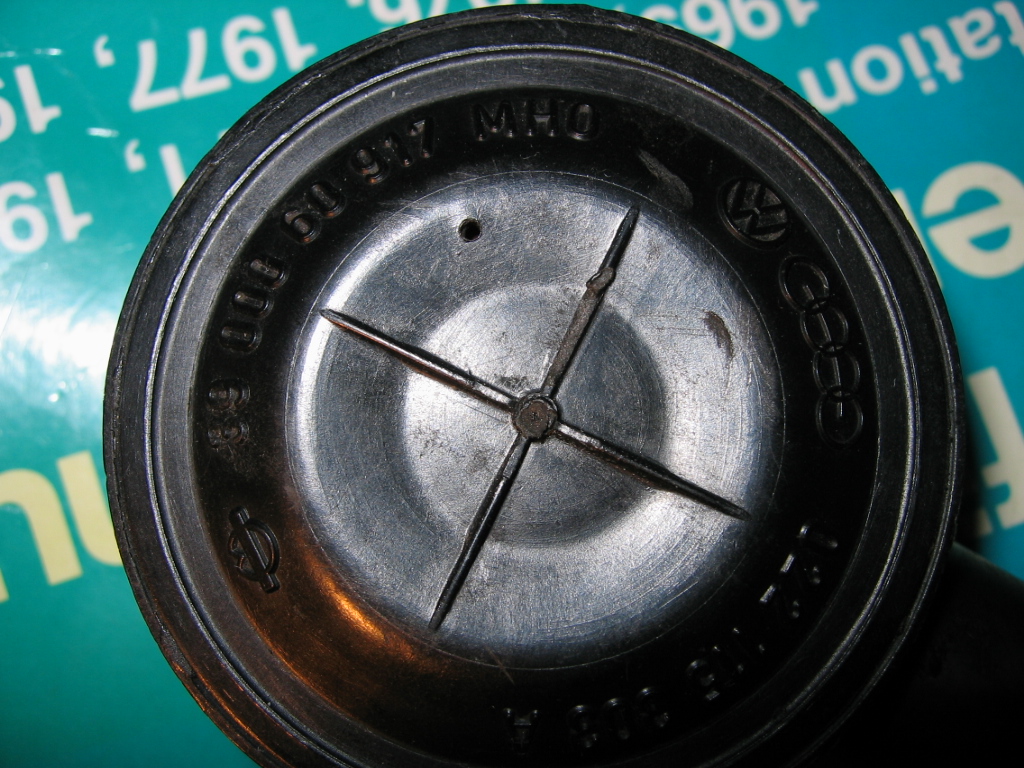 i understand this membrane is a flexible valve that allows pulses of fumes to be released from the crankcase into the inlet system. its used on bus L jet engines and was used on the 412 L jet engine too. here is a photo of a 412 L jet engine. 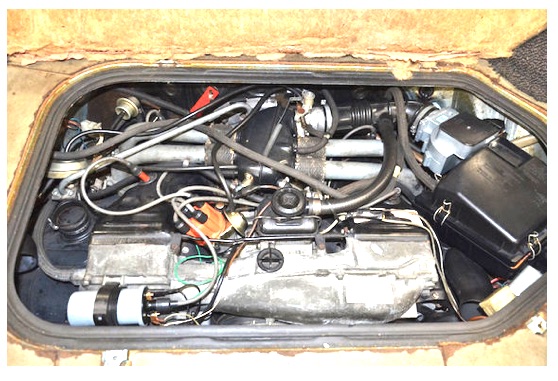 there is no oil filler in those engines. instead the dipstick and oil filler are elsewhere. ------ i don't know enough to tell you exactly how they work precisely in the VW applications. but i believe its pulsed release of crank case fumes into the inlet system for burning. but it might also be designed in those engines not to open at idle and only open at higher revs in addition. dunno. main point is its not open to atmosphere. the pin hole just lets the membrane operate at atmospheric pressure on one side. so it can flex up and down over the top of the crankcase vent tube coming up through the baffle box. i think ours are the same. there is no opening to the atmosphere. but in ours the membrane is rendered inoperative. no pulsed release of crank case fumes to inlet system. our crankcase vent tube is open to inlet system all the time and the cap is sitting up at top of oil filler tube well above the hose outlet to the inlet manifold. all it does is seal the cap and its pinhole. they could have made a separate stand alone part. but they didn't. maybe because they made 10 million VW versions of the engine and only several thousand 914 versions? so it made sense to do an adaption of pre made elements to build up the part. as far as i can tell the oil filler tube and fill cap is only on these 914 engines. but i don't really know much about the millions of VW fuel injected engines that floated around the USA in the early 70s. the failure mode for the VW part is just what your smoke test showed. fumes out of the pinhole. - the fix for failure of this membrane in the VW engines is to take it out and replace with a rigid circular steel plate. this converts the valve into a permanently open to the inlet system crankcase vent like our cars have. this also seals off the pin hole to the atmosphere which would normally be sealed by an uncompromised membrane. i would say the pinhole is never meant to be open to the crankcase. doesn't mean i am right though. i didn't really even know L jet had a totally different pcv valve set up to D jet engines until a couple of years ago. not something i took much notice of until recently. ---- i guess there is always the chance its meant to rupture in case of excessive crankcase pressure. like a fail safe one time valve. but i doubt it. its a pretty small hole. i would have thought given the way it all is just big bore hoses into the inlet system, such pressure - whether negative or positive would tend to equalise up through the AFM via idle air passage? there is no valve anywhere in the crankcase vent as far as i can tell in a L jet 914. its just open from crankcase to combustion air inlet. ???? |
Posts in this topic
 nihil44 L Jet vacuum leak pursuit '74 1.8 Feb 23 2022, 08:57 PM
nihil44 L Jet vacuum leak pursuit '74 1.8 Feb 23 2022, 08:57 PM
 wonkipop sh$t.
oh no.
thats got me beat,.........and... Feb 24 2022, 12:44 AM
wonkipop sh$t.
oh no.
thats got me beat,.........and... Feb 24 2022, 12:44 AM
 wonkipop i just went and looked at mine.
same pinprick hole... Feb 24 2022, 12:48 AM
wonkipop i just went and looked at mine.
same pinprick hole... Feb 24 2022, 12:48 AM
 djway When I did my smoke test nothing came out that hol... Feb 24 2022, 01:35 AM
djway When I did my smoke test nothing came out that hol... Feb 24 2022, 01:35 AM

 wonkipop
When I did my smoke test nothing came out that ho... Feb 24 2022, 02:36 AM
wonkipop
When I did my smoke test nothing came out that ho... Feb 24 2022, 02:36 AM
 wonkipop i read that samba thread from end to end.
not tha... Feb 24 2022, 05:09 AM
wonkipop i read that samba thread from end to end.
not tha... Feb 24 2022, 05:09 AM
 Van B I think we have a bit of a red herring here. Base... Feb 24 2022, 08:40 AM
Van B I think we have a bit of a red herring here. Base... Feb 24 2022, 08:40 AM

 nihil44 @wonkipop
Yep. I read the Samba article and it d... Feb 24 2022, 04:07 PM
nihil44 @wonkipop
Yep. I read the Samba article and it d... Feb 24 2022, 04:07 PM
 wonkipop @nihil44 there are about 5 posts to read in that ... Feb 24 2022, 04:47 PM
wonkipop @nihil44 there are about 5 posts to read in that ... Feb 24 2022, 04:47 PM
 wonkipop @[url=http://www.914world.com/bbs2/index.php?showu... Feb 24 2022, 05:02 PM
wonkipop @[url=http://www.914world.com/bbs2/index.php?showu... Feb 24 2022, 05:02 PM
 Van B Considering I have never heard and am not even sur... Feb 24 2022, 06:14 PM
Van B Considering I have never heard and am not even sur... Feb 24 2022, 06:14 PM

 wonkipop
Considering I have never heard and am not even su... Feb 24 2022, 07:01 PM
wonkipop
Considering I have never heard and am not even su... Feb 24 2022, 07:01 PM
 Van B Massively versatile slang right there! Feb 24 2022, 07:15 PM
Van B Massively versatile slang right there! Feb 24 2022, 07:15 PM

 nihil44
I have been looking a little more closely at th... Feb 28 2022, 10:35 PM
nihil44
I have been looking a little more closely at th... Feb 28 2022, 10:35 PM
 Van B It was gnawing at you eh? Well that pin hole is th... Feb 28 2022, 10:57 PM
Van B It was gnawing at you eh? Well that pin hole is th... Feb 28 2022, 10:57 PM

 nihil44 Van,
Haven't been driving the car much. Biblic... Mar 1 2022, 01:36 AM
nihil44 Van,
Haven't been driving the car much. Biblic... Mar 1 2022, 01:36 AM

 wonkipop
Van,
Haven't been driving the car much. Bibli... Mar 1 2022, 02:18 AM
wonkipop
Van,
Haven't been driving the car much. Bibli... Mar 1 2022, 02:18 AM

 Van B
Van,
Haven't been driving the car much. Bibli... Mar 1 2022, 08:07 AM
Van B
Van,
Haven't been driving the car much. Bibli... Mar 1 2022, 08:07 AM
 wonkipop @nihil44
i am looking at our cap and oil filler ... Mar 1 2022, 05:34 PM
wonkipop @nihil44
i am looking at our cap and oil filler ... Mar 1 2022, 05:34 PM
 wonkipop here you go @nihil44 .
why your remark about neg... Mar 1 2022, 08:46 PM
wonkipop here you go @nihil44 .
why your remark about neg... Mar 1 2022, 08:46 PM
 wonkipop ok @[url=http://www.914world.com/bbs2/index.php?s... Mar 1 2022, 10:54 PM
wonkipop ok @[url=http://www.914world.com/bbs2/index.php?s... Mar 1 2022, 10:54 PM

 nihil44 @wonkipop
Man that is some dissertation on the f... Mar 2 2022, 03:16 AM
nihil44 @wonkipop
Man that is some dissertation on the f... Mar 2 2022, 03:16 AM

 wonkipop
@[url=http://www.914world.com/bbs2/index.php?show... Mar 2 2022, 05:23 AM
wonkipop
@[url=http://www.914world.com/bbs2/index.php?show... Mar 2 2022, 05:23 AM
 Van B well it's a good thing those caps are NLA...
I... Mar 2 2022, 08:20 AM
Van B well it's a good thing those caps are NLA...
I... Mar 2 2022, 08:20 AM

 wonkipop
well it's a good thing those caps are NLA...
... Mar 2 2022, 04:50 PM
wonkipop
well it's a good thing those caps are NLA...
... Mar 2 2022, 04:50 PM

 wonkipop
well it's a good thing those caps are NLA...
... Mar 2 2022, 08:58 PM
wonkipop
well it's a good thing those caps are NLA...
... Mar 2 2022, 08:58 PM
 Van B @wonkipop
I did some part number tracing (because... Mar 3 2022, 12:38 AM
Van B @wonkipop
I did some part number tracing (because... Mar 3 2022, 12:38 AM

 wonkipop
[b]@[url=http://www.914world.com/bbs2/index.php?s... Mar 3 2022, 02:12 AM
wonkipop
[b]@[url=http://www.914world.com/bbs2/index.php?s... Mar 3 2022, 02:12 AM
 Van B Alright my Ozzy friends,
I tested my oil cap toda... Mar 6 2022, 05:13 PM
Van B Alright my Ozzy friends,
I tested my oil cap toda... Mar 6 2022, 05:13 PM

 wonkipop
Alright my Ozzy friends,
I tested my oil cap tod... Mar 6 2022, 10:17 PM
wonkipop
Alright my Ozzy friends,
I tested my oil cap tod... Mar 6 2022, 10:17 PM
 Van B Also, the PN on my cap is 022 115 303, not the PN ... Mar 6 2022, 05:22 PM
Van B Also, the PN on my cap is 022 115 303, not the PN ... Mar 6 2022, 05:22 PM
 emerygt350 Man that is such a cool looking cruck. I think yo... Mar 7 2022, 02:52 PM
emerygt350 Man that is such a cool looking cruck. I think yo... Mar 7 2022, 02:52 PM

 wonkipop
Man that is such a cool looking cruck. I think y... Mar 7 2022, 03:33 PM
wonkipop
Man that is such a cool looking cruck. I think y... Mar 7 2022, 03:33 PM
 emerygt350 Oh yeah, that sounds like a great motor. Was it m... Mar 7 2022, 03:47 PM
emerygt350 Oh yeah, that sounds like a great motor. Was it m... Mar 7 2022, 03:47 PM

 wonkipop
Oh yeah, that sounds like a great motor. Was it ... Mar 7 2022, 04:10 PM
wonkipop
Oh yeah, that sounds like a great motor. Was it ... Mar 7 2022, 04:10 PM
 emerygt350 That thing is just begging for a turbo.... Mar 7 2022, 08:24 PM
emerygt350 That thing is just begging for a turbo.... Mar 7 2022, 08:24 PM
 wonkipop
That thing is just begging for a turbo....
http... Mar 7 2022, 09:50 PM
wonkipop
That thing is just begging for a turbo....
http... Mar 7 2022, 09:50 PM  |
1 User(s) are reading this topic (1 Guests and 0 Anonymous Users)
0 Members:

|
Lo-Fi Version | Time is now: 4th July 2025 - 08:12 PM |
Invision Power Board
v9.1.4 © 2025 IPS, Inc.







